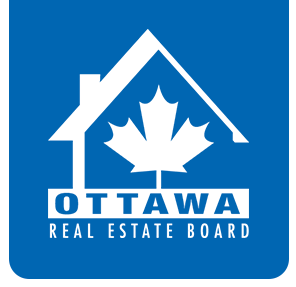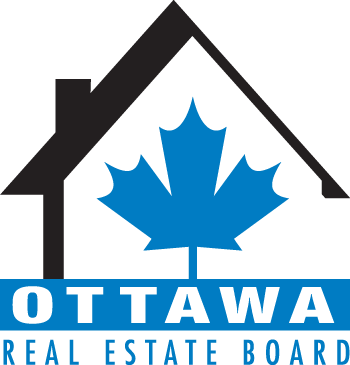Q. What are the terms frequently used in commercial real estate, and what do they mean?
A. The following is a list of terms and explanations frequently used in commercial real estate business.
Accrued Items of Expense
Incurred expenses that are not yet payable.
Accrual Method
An accounting method of reporting income in which expenses incurred and income earned for a specific period are reported, although the expenses and income may not have actually been paid or collected.
Ad Valorem
According to value (Latin). This term is generally used to refer to real estate taxes, according to a fixed percentage of value.
Adjusted Cost Basis (A.C.B.)
The original cost of a property, or V-Day Value, plus improvement costs, plus costs of sale = A.C.B. at sale.
After Tax Equity Yield Rate
The annual rate of return on equity after payment of income taxes; similar to internal rate of return after taxes.
After Tax Investment
The net cost to make an investment after allowance or deduction for tax consideration offsets.
After Tax Yield
Annual profit remaining after payment of income taxes; the annual rate of return on equity after payment of income taxes.
Agreement For Sale
An equitable right which can be registered at the Land Registry Office.
Agreement of Sale
An interim Agreement; the first legally binding agreement into which buyer and seller enter and on such terms and conditions as the parties may decide.
Arbitage
The difference between the interest of a wrap-around mortgage and the prime mortgage.
Arm’s Length
Unaffected by abnormal pressures; a normal price of transaction resulting from normal competition.
Assessed Value
The value placed on land and buildings separately, by a County Assessor for use in levying real estate taxes.
Balloon
That portion of a mortgage loan which is not amortized and payable in a lump sum at the end of the loan term.
Band of Investment
The technique of combining weighted rates attributable to components of a capital investment to derive a weighted average rate attributable to the total investment.
Basis
The value of property for income tax purposes, which is usually computed as the sum of original cost of improvements, plus capital improvements, less accrued depreciation. (See U.C.C.)
Blanket Mortgage
A single mortgage that covers more than one piece of real estate.
Bonds
Securities issued by a corporation or a governing body to raise funds. Bonds are backed by a promise to pay a certain sum of money on a specific date, plus interest, payable in installments during the term of the bonds.
Book Value
The acquisition costs of an asset less any accrued depreciation.
Break-Even Point
The figure at which occupancy income (gross income) equals all required expenses (variable costs) and debt service (fixed costs).
Cash Flow Before Taxes (C.F.B.T.)
The remaining funds after all cash expenses and debt curtailment have been paid out of income received from the operation of any income-producing property. Usually expressed as a yearly figure.
Cash Flow After Taxes (C.F.A.T)
As above plus or minus tax results.
Cash on Cash
A percentage figure arrived at by dividing the cash flow before taxes from a property by the total investment in the property and multiplying by 100. Also called Cash Yield.
Caveat Emptor
Let the buyer beware.
C.C.A.
Capital cost allowance, which for income tax purposes is a permissible deduction from income, which may be claimed in whole or in part. Cannot create a rental loss.
Common Stock
That class of corporate stock to which there is ordinarily attached no preference with respect to the receipt of dividends or the distribution of assets on corporate dissolution.
Component Depreciation
A method of calculating depreciation where separate items of a building having different useful lives are depreciated on different schedules. For example, furniture may be depreciated at 20%, class 8, while paving may be depreciated at only 8%, class 17.
Compound Interest
Interest paid on original principal and also on the accrued and unpaid interest which has accumulated as the debt matures.
Debt-Coverage Ratio
Net annual income divided by annual debt service. For example, if net annual income is $140,000 and debt service is $100,000, the debt coverage ratio is $140,000 divided by $100,000, or 1.40. It is a measure of safety from the lender’s point of view.
Demography
The statistical science dealing with the distribution, density, vital statistics and so forth of a population.
Depreciation
Loss of value due to all causes. Depreciation includes (1) physical deterioration, ordinary wear and tear, (2) functional depreciation and (3) economic obsolescence, causes outside the property.
Depreciation For Tax Purposes
Called Capital Cost Allowance. There are 3 methods to determine base for C.C.A.: (1) Allocation of Purchase Price on the Offer to Purchase. Agreed upon by both seller and purchaser. (2) Use accredited appraiser who will provide an allocation between land and improvements. (3) Use assessment ratios of land and improvements. The depreciation deduction taken annually must be deducted from the undepreciated capital cost of the property for later calculations of potential gains on disposition.
Depreciation, Declining Balance Method of
Where the improvement portion of an investment is depreciated and the annual amount allowable is subtracted from the original U.C.C. or remaining U.C.C. For example, Class 3 – 5% declining balance. This class of property is limited to a C.A.A. of no greater than 5% of the U.C.C. or the total amount of taxable income before C.C.A., if it is less than 5% of the U.C.C. for the period involved. You cannot shelter other income with C.C.A. in a Class 3 property, as Revenue Canada will not allow a “paper loss” caused by capital cost allowance, on this type of property.
Effective Gross Income
The estimated gross potential income less allowance for vacancies and/or credit losses; the estimated gross potential income less allowances for fluctuations.
Effective Interest Rate
The percentage of interest that is actually being paid by the borrower for the use of the money, distinct from nominal interest.
Eminent Domain
The right of the people or government to take private property for public use upon payment of compensation.
E.O.Y.
End of year.
Equity Ratio
Original equity ratio is the down payment divided by the sales price.
Equity Rate Of Return (E.R.R.)
A true annualized rate of return on equity capital including the full effect of any gain from appreciation of the investment, plus the principal reduction of mortgages in a given year, plus the C.F.A.T., divided by the initial investment. Disposition not considered in this rate as selling costs not used. For a rate of return forecasting disposition see I.R.R.
Escalation Clause
In a lease, provides for lessee to bear the amount of any increase in a particular expense over an established lease year.
Financial Management Rate of Return
A rate by which cash flows are realistically re-invested as received to project a realistic forecast.
Free-and-Clear Return
A method of evaluating investment opportunities in which annual project income is divided by the total project cost to arrive at the free-and-clear return; assumes no debt financing.
Functional Obsolescence
Defects in a building or structure that detract from its value or marketability; usually the result of layout, design, or other features that are less desirable than features designed for the same functions in newer property. Example of curable: high ceilings, outdated furnace. Example of incurable: poor style, low ceilings.
Gain
The amount arrived at after deducting A.C.B. from sales price on disposition of property. The full gain could be taxable, depending on how Revenue Canada views the seller, i.e. a “trader” will pay tax on the full gain.
Gap Loans
A loan or a commitment to make a loan that covers the difference between the “floor loan” (the guaranteed minimum loan committed by a major lender) and the “ceiling loan” (the maximum loan committed by a major lender), usually tied to a certain gross rental amount.
Gross Income
The total money received from income property, or a business, before operating expenses, taxes, depreciation, commissions, salaries, fees and so on are deducted.
Gross Rent Multiples (GRM)
Sales price or value divided by gross annual income. For example, if sales price is $325,000 and gross annual income is $50,000, the G.R.M. is 6.5 ($325,000 divided by $50,000). It is a “rule of thumb” used by many investors who set their own individual standards or derive it from the market.
Holding Period
The term of ownership for an investment.
Interest
Money paid for, or earned by, the use of capital as distinguished from return of capital; analogous to yield. In mortgage-equity work, the term “interest” is reserved for the return on a mortgage loan.
Interest Only Loan
A non-amortizing loan for which the lender receives only interest during the term of the loan and recovers principal in a lump sum at the end of the term: a “straight” loan.
Internal Rate of Return (I.R.R.)
The annualized rate of return on capital which is generated or is capable of being generated internally within an investment or portfolio during the period of ownership. The calculation of I.R.R. involves the process of discounting the after-tax flows and after-tax net sale proceeds, so that the sum of their present value is equal to the initial investment.
Interpolation
The calculation or estimation of a quantity within the range of data upon which the calculation or estimate is based; the process of approximating an intermediate value which falls between tabular entries is a set of tables.
Lease
A written or an oral contract between a landlord (the lessor) and a tenant (the lessee) transferring the right to exclusive possession and use of the landlord’s real property to the lessee for a specified period of time and for a stated consideration (rent).
Leaseback
A transaction in which an investor purchases property and then leases it back to the seller.
Leverage
The use of another’s money (usually a financial institution) for a proportion of the costs of purchasing or developing a real estate investment. When the return on the equity portion of the investment is higher than it would have been without leverage, positive leverage is said to exist. When the return on the equity portion of the investment is lower than it would have been without leverage, negative or reverse leverage is said to exist.
Net Income Multiplier
The relationship between price or value and net income expressed as a factor: The reciprocal of the Overall Rate. Identical answers are found by multiplying net annual income by the Net Income Multiplier (NIM) or dividing it by the Overall Rate. To illustrate: Overall Rate of .106137: $240,000 divided by .106137 = $2,261,228. (See also “Reciprocal”)
Net Lease
Lease under which the tenant pays the agreed upon rent plus utilities and taxes.
Net Income
The difference between effective gross income (property) and the expenses including taxes and insurance. The term is qualified as net income before debt service.
Net-Net Lease
Lease under which the tenant pays the agreed upon rent plus utilities, taxes, insurance and maintenance.
Net-Net-Net Lease
Lease under which the tenant pays the agreed upon rent plus all costs of maintenance and repair. Also called triple-net lease.
Present Worth
As an amount, present worth of an income stream or single income payment due in the future worth less compound interest. It is the original capital amount or value that will generate the future income stream or sum at an anticipated yield rate within a specified period of time. The present worth factors, applied as multipliers in a “discounting” process, automatically compute and subtract compound interest from the payment or payments receivable in the future so that the original principal remains. Thus is the time value of money measured.
Prime Rate
The interest rate (or discount rate) which a commercial bank charges for short-term loans to borrowers with highest credit ratings; the minimum obtainable interest rate in commercial banking at a particular point in time; often the basis for “floating rates” such as “Prime Plus 2”, meaning the prevailing prime rate plus two percentage points.
Principal
A capital sum; payment which represents partial or full repayment of capital loaned or invested as distinguished from payment of interest; the unrecovered capital remaining in a loan or investment.
Pro Forma
A model document drawn up to meet legal requirements, for purposes of forecasting future business projections, or holding periods to disposition to calculate return rates, and discounted cash flows. Also used on major developments as feasibility studies.
Realized Gain (also referred to as “Indicated Gain”)
Fair market value minus adjusted cost basis of the property.
Return to Investor
Benefit received by investors, including one or more of the following components: Equity Build-Up – Increase in the equity investor’s share of total property value resulting from gradual debt reduction through periodic repayment of principal on a mortgage loan and/or increase in total property value. Cash Flow – Cash distributions from operations after provision for reserves for maintenance, repair and replacement. Tax Shelter – The value of losses passed through to the investor that can be used for tax purposes to offset or “shelter” other income.
Reversion
The return of rights in real estate to the grantor, such as the return of the full use of real estate to the lessor at the expiration of a lease; the estate returned or due to be returned; in mortgage-equity analyses, synonymous with proceeds of resale at the end of the ownership projection period.
Reverse Leverage
A situation that occurs when financing is too costly; when the total yield on a cash investment is less than the interest rate or borrowed funds.
Salvage Value
The anticipated value of an asset at the end of its economic life.
Simple Interest
Interest computed on the principal amount of a loan only as distinguished from compound interest.
Sinking Fund
A gradually accumulated fund created to diminish a debt. At the end of a given period, the fund will have a sufficient amount, including interest earned, to replace the loss or satisfy the obligation that has fallen due.
Sinking Fund Factor
A multiplier used to compute periodic contributions to a sinking fund which will grow with compound interest at a selected rate for a specified period of time; the amortization rate; the amount per period which will grow to one dollar at a given rate in a given period of time; one of the classic six functions of one dollar.
Terminal Loss
Where the assets (building) may have been disposed of but a balance of U.C.C. remains at the end of taxation year. The remaining balance of U.C.C. must be deducted from income in full, in the year the assets are disposed of.
Undepreciated Capital Cost (U.C.C.)
The amount left undepreciated upon disposition of property.
Wraparound Mortgage
A technique in which the lender assumes payment of the existing mortgage and give a new, increased mortgage to the borrower at a higher interest rate. The new mortgage “wraps around” the existing one.
Yield
Money paid or earned as a return on capital; analogous to interest but commonly used in connection with return on equity investments; as distinguished from interest paid on mortgage loans; the term “yield” may denote profits in total dollars or it may be used as a contraction of the term “equity yield rate”, denoting the annual rate of return on equity capital.


